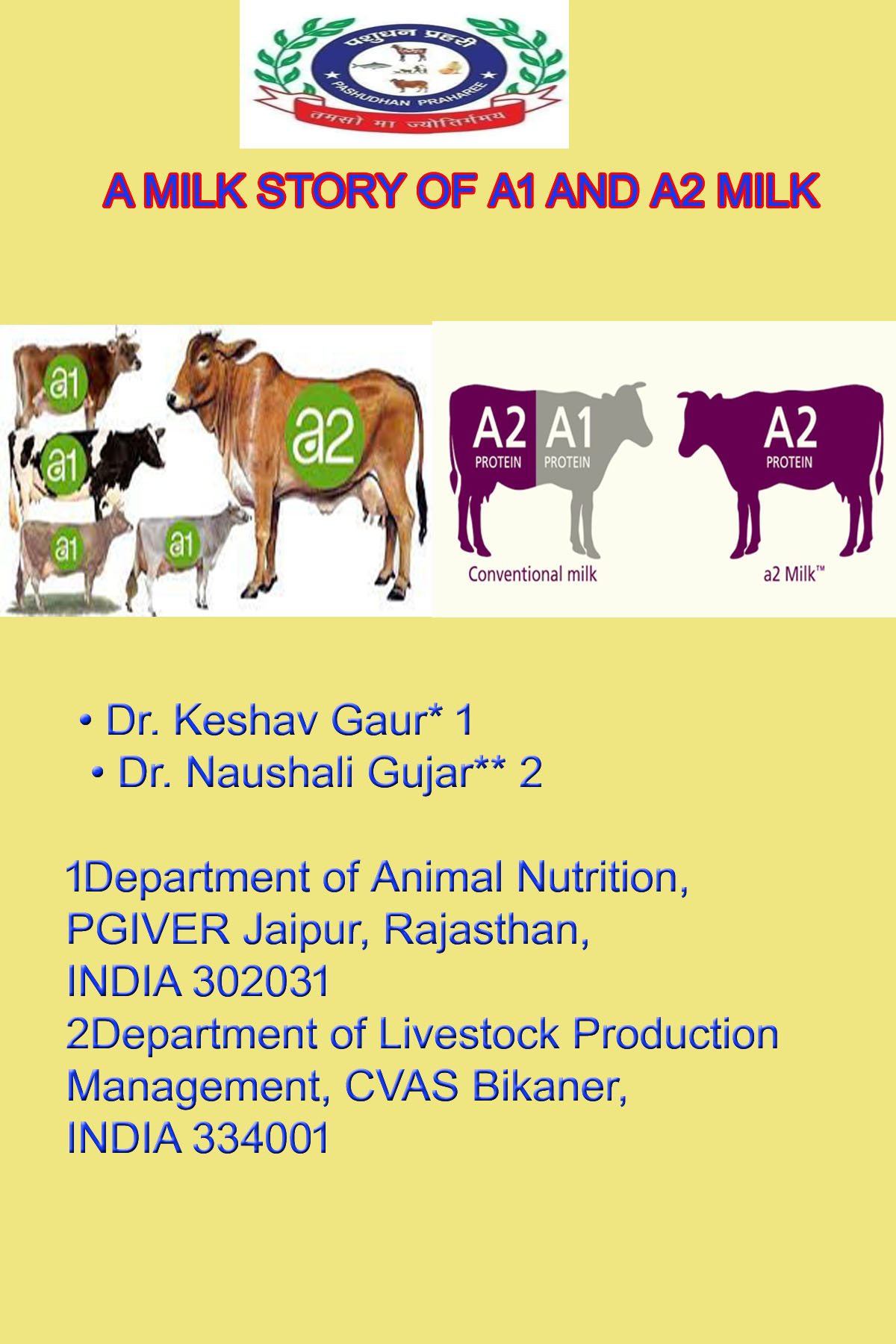A MILK STORY OF A1 AND A2 MILK
- Dr. Keshav Gaur* 1 • Dr. Naushali Gujar** 2
1Department of Animal Nutrition, PGIVER Jaipur, Rajasthan, INDIA 302031
2Department of Livestock Production Management, CVAS Bikaner, INDIA 334001
*keshavgaur2512@gmail.com **Naushaligujar8@gmail.com
Introduction:
Milk which is considered to be an ideal food contain almost all the nutrients. But the milk which is consumed by indian consumers are beneficial for their health ? According to a survey conducted by Food Safety and Standard Authority of India (FSSAI) in 2018; around 68.7% of milk and milk products in india is adulterated. From last many years A1 and A2 milk are among the hot topic of discussion.
What is the difference between A1 and A2 milk:
A1 and A2 mik are the product of two genetically isolated breeds of cattle. Major portion of the milk protein is casein. Cow’s milk contain approx. 3.5% casein protein. Among the total milk protein; Beta-casein constitutes nearly 30%. Basically variation among the structure of Beta-casein differentiates A1 and A2 milk.
The type of Beta-casein found in A2 milk is of primitive nature i.e. same type of Beta-casein was present in earlier cows; which was domesticated for the very first time about 10000 years ago. But in last thousand years; due to some natural evolution among the European cow’s herd; some changes has occured in the structure of Beta-casein protein. So A1 milk comes from HF, Ayrshire & English type breeds; in contrary to this A2 milk comes from our native indigenous Indian breeds.
When we consume milk; coming from A1 cows then inside our body it get disintegrated into a molecule-a bioactive peptide (similar to a morphine compound) which is generally not considered good for the human health. Even consumption of A2 milk also produces a similar bioactive peptide but in comparison to the one produce in A1 milk; this harmful form is produce in very negligible form. This harmful bioactive peptide is considered to be the cause of diabetes, cardiac diseases, infants mortality, digestive problems.
Problem in the Indian scenario :
As per the NBAGR-2020 report, India has a total of 50 recognised pure cattle breeds. Sahiwal, Gir, Tharparker, Red-sindhi, Rathi, Kankrej, Ongole and Hariana are the some important cattle breeds. Milk of all the indigenous cow was of A2 type; but in 1970 ‘Operation Flood programme’ was launched by Indian government.
Under this programme; pure desi indigenous cows were crossed with exotic cattle breeds. As a result of this, maximum indigenous cows now have hybrid genes and therefore producing more proportion of A1 milk. Although aim of the Operation flood programme was to increase milk production in india; but in current scenario, we are facing a serious problem where our desi indigenous cows are at the verge of extinction which were producing nutritious, safer A2 milk for us since so many past years.
Conclusion :
Indian government should run a programme to ensure that a livestock owner must get his animal inseminated from the seman of A2 bull only. Also; department of animal husbandry should organize awareness programmes in every villages at frequent time interval, to promote welfare and well being of both animals & humans.


